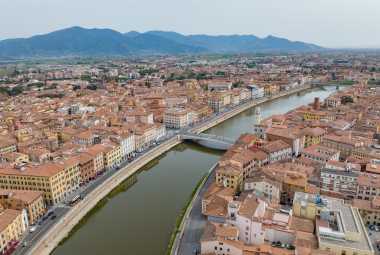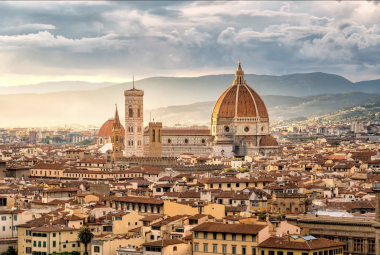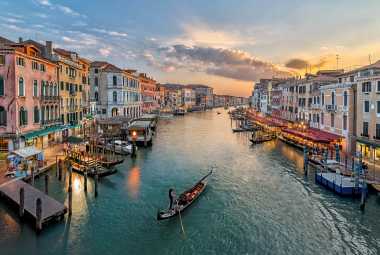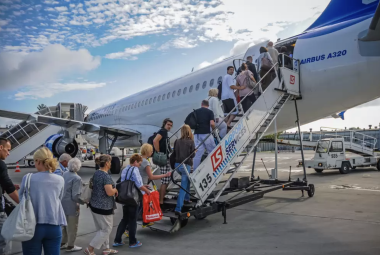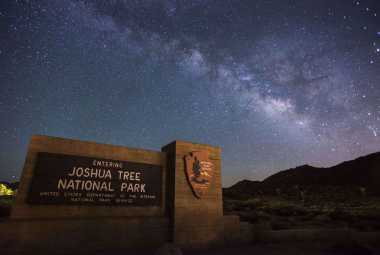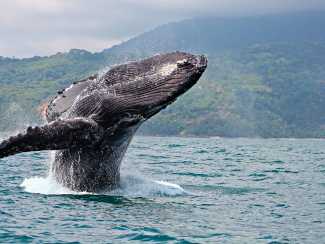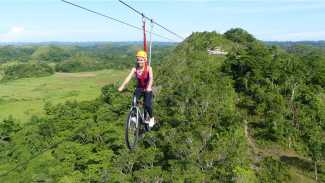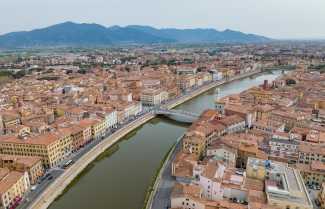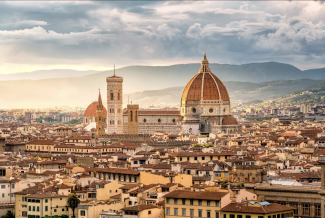Image by worldlyadventurer.com
*Vacation Mode is a for-profit site. It contains paid banner advertisements that are generated and managed by a third-party network. This site also includes relevant affiliate links (both in the content and on the sidebar) all of which we do our best to clearly mark as such.
Are you tired of the fast-paced, touristy trips? Yearning for a deeper, more authentic experience in South America? Slow travel is the answer. It allows you to fully immerse in the local culture, connect with the people and the land. Discover the beauty of South America in a whole new way with our guide.
What is Slow Travel?
Slow travel is a mindful and immersive way of experiencing a destination. It focuses on quality rather than quantity, allowing travelers to fully appreciate the local culture, traditions, and natural beauty. Unlike traditional tourism, slow travel promotes a slower pace, giving individuals the opportunity to truly connect with their surroundings. It involves spending more time in one place, delving deep into its unique characteristics, and engaging with the local community.
To fully embrace slow travel, consider staying in locally-owned accommodations, utilizing public transportation or walking instead of flying or driving, and indulging in local cuisine. Immerse yourself in the local culture by participating in community events or festivals, learning the language, or taking part in sustainable activities such as hiking or volunteering. Slow travel allows for a deeper understanding and appreciation of the places visited, creating a more meaningful and authentic travel experience.
Some suggestions for slow travel in South America include exploring the charming cobblestone streets of Cartagena, Colombia, experiencing the vibrant rhythms of Buenos Aires, Argentina, or trekking through the breathtaking landscapes of Patagonia, Chile. Take the time to fully immerse yourself in the rich history, vibrant culture, and stunning scenery that South America has to offer.
Why is Slow Travel Becoming Popular?
The concept of slow travel is gaining popularity for several reasons. Firstly, people are becoming increasingly aware of the negative impact of mass tourism on the environment and local communities. Slow travel offers a more sustainable and responsible way of exploring a destination, as it encourages travelers to fully immerse themselves in the local culture and support local businesses.
Moreover, slow travel provides an opportunity to truly experience a place and connect with its people. By spending more time in one location, travelers can delve deeper into the local customs, traditions, and way of life, resulting in a more authentic and meaningful travel experience.
Furthermore, slow travel promotes a slower pace of life, allowing travelers to relax, rejuvenate, and escape the stress of their daily routines. It encourages a mindful approach to travel, where the focus is on quality rather than quantity.
Best Places to Travel in South America
Video by Aliki Travel Blog
What are the Benefits of Slow Travel?
As the popularity of slow travel continues to rise, many travelers are drawn to the idea of exploring South America at a slower pace. But what exactly are the benefits of slow travel? In this section, we will discuss how embracing a slower travel style can lead to a deeper cultural immersion, reduced environmental impact, more authentic experiences, and even better mental and physical health. So let's dive in and discover the advantages of taking your time to explore the wonders of South America.
1. Deeper Cultural Immersion
If you're looking to have a more profound cultural experience during your slow travel, here are some steps to consider:
- Research local customs and traditions: Before your trip, educate yourself about the customs, traditions, and etiquette of your destination. Understanding these cultural aspects will allow you to engage more respectfully and authentically with the locals.
- Learn the local language: Even if it's just a few basic phrases, making an effort to speak the local language can greatly enhance your connection with the local culture. It shows respect and opens doors for meaningful interactions.
- Participate in local activities: Immerse yourself in the local culture by taking part in activities that are important to the community. Attend festivals, visit local markets, take cooking classes, or join cultural tours to gain a deeper understanding of the traditions and way of life.
- Stay with locals: Consider staying in homestays, guesthouses, or community-run accommodations where you can interact with local hosts and learn about their daily lives. This provides a unique opportunity to engage in conversations and learn firsthand about the culture.
For a more immersive cultural experience in South America, consider visiting destinations like Cusco in Peru, Cartagena in Colombia, Buenos Aires in Argentina, or La Paz in Bolivia. These cities offer rich cultural heritage, vibrant traditions, and opportunities to engage with the local communities.
2. Reduced Environmental Impact
Reduced environmental impact is one of the main advantages of slow travel. By being more mindful and intentional in our travels, we can minimize our negative impact on the environment and contribute to sustainable tourism practices. Here are some actions you can take to reduce your environmental impact while engaging in slow travel in South America:
- Choose eco-friendly transportation options: Opt for public transportation, cycling, or walking whenever possible to decrease carbon emissions.
- Pack light: Traveling with lighter luggage reduces fuel consumption and carbon emissions during transportation.
- Stay in sustainable accommodations: Look for eco-friendly hotels, hostels, or eco-lodges that prioritize sustainability practices such as energy conservation and waste management.
- Support local businesses: Eat at local restaurants, buy locally produced souvenirs, and participate in community-based tourism initiatives to contribute to the local economy and reduce environmental footprint.
- Conserve resources: Practice water conservation, turn off lights and electronics when not in use, and use reusable water bottles and bags to minimize single-use plastics.
- Follow Leave No Trace principles: Respect the natural environment by not disturbing wildlife, picking up trash, and leaving nature as you found it.
By following these actions, you can enjoy your slow travel experience in South America while reducing your environmental impact and promoting sustainable tourism.
3. More Authentic Experiences
When embarking on a slow travel journey, one of the key benefits is the opportunity to have more authentic experiences. By immersing yourself in the local culture, you can gain a deeper understanding of the destination and create meaningful connections with the people you encounter.
Here are some steps to help you have more authentic experiences during your slow travel adventure:
- Engage with the locals: Interact with the locals and learn about their way of life. Visit local markets, attend cultural events, and strike up conversations to get insights into their traditions and customs.
- Try local cuisine: Explore the local food scene and savor the authentic flavors of the region. Opt for street food, family-run restaurants, or cooking classes to taste traditional dishes and learn about their significance.
- Participate in local activities: Join local workshops, festivals, or community projects to actively engage with the local community. This could involve learning traditional crafts, volunteering, or participating in cultural celebrations.
- Explore off-the-beaten-path destinations: Venture beyond the tourist hotspots to discover hidden gems and lesser-known attractions. This allows you to experience the destination from a local perspective and avoid crowds.
4. Better Mental and Physical Health
Slow travel offers numerous benefits for both mental and physical health. Here are some steps to promote better well-being during your slow travel journey in South America:
- Engage in outdoor activities: Take advantage of the stunning natural landscapes in South America by hiking, biking, or participating in water sports. These physical activities promote fitness and release endorphins, boosting mood and improving mental well-being.
- Practice mindfulness: Slow travel encourages being present in the moment. Take time to meditate, practice yoga, or simply relax in nature. This can reduce stress, improve focus, and enhance overall mental health.
- Embrace local cuisine: South American cuisine is often rich in fresh ingredients and flavors. Enjoying local, healthy meals can provide nourishment for both the body and mind.
- Connect with locals: Interacting with locals can foster cultural understanding and create meaningful connections. Socializing and forming new relationships can contribute to improved mental health and a sense of belonging.
Fact: Studies have shown that slow travel experiences can lead to reduced stress levels and increased life satisfaction, ultimately benefiting both mental and physical health.
What is South America Known for?
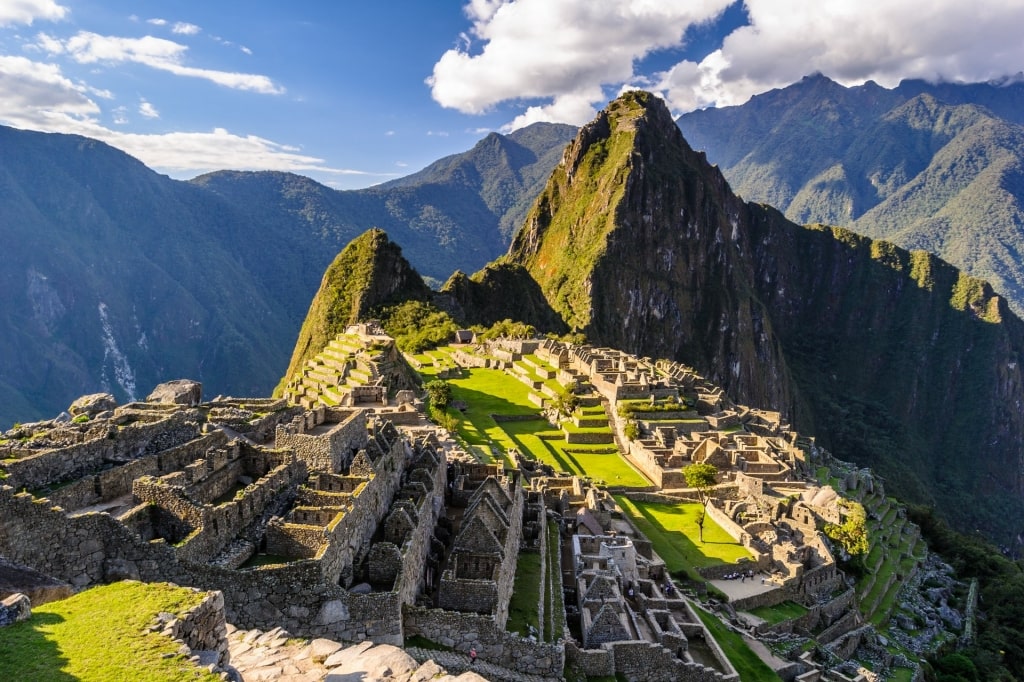
South America is renowned for its rich cultural heritage, diverse landscapes, and vibrant cuisines. The continent is most notably recognized for its vast Amazon rainforest, the largest tropical rainforest in the world, which is home to an astonishing variety of plant and animal species.
South America also boasts impressive ancient civilizations, such as the Inca Empire in Peru and the Mayan ruins in Mexico. The continent is also famous for its passionate dance forms, including the tango in Argentina and the samba in Brazil.
Moreover, South America is home to breathtaking natural wonders, such as the Iguazu Falls in Argentina and Brazil, and the Galapagos Islands in Ecuador.
The cuisine of South America is celebrated globally, with dishes like ceviche from Peru, empanadas from Argentina, and feijoada from Brazil gaining international recognition. With its diverse offerings, South America truly has something to offer every traveler.
Why is South America a Great Destination for Slow Travel?
South America is a vast and diverse continent, offering a multitude of experiences for travelers. But for those seeking a more meaningful and immersive journey, slow travel in South America is the way to go. In this section, we will explore why South America is the perfect destination for this type of travel. From its rich and varied cultures to its breathtaking natural landscapes, there is something for everyone. Additionally, we will discuss the affordability of traveling in South America and the opportunities it offers for volunteering and community engagement.
1. Diverse Cultures and Traditions
When it comes to slow travel in South America, one of the main attractions is the diverse cultures and traditions that can be experienced in the region. To fully immerse yourself in the rich cultural heritage of South America, here are some steps to consider:
- Research: Conduct thorough research on the countries and regions you plan to visit in South America. Learn about the different ethnic groups, languages, and customs that are prevalent in each destination.
- Immerse yourself: Engage with locals, participate in cultural activities, and attend festivals or events that showcase the unique traditions of the region.
- Try local cuisine: Food is an integral part of culture, so make sure to sample traditional dishes and explore local markets to get a taste of the diverse culinary heritage of South America.
- Visit historical sites: Explore historical landmarks, museums, and archaeological sites to gain a deeper understanding of the history and heritage of the region.
2. Stunning Natural Landscapes
Stunning natural landscapes are one of the main draws for travelers to South America. The continent boasts a diverse and breathtaking range of scenery, providing opportunities for immersive experiences in nature. Here are some examples of the stunning natural landscapes found in South America:
- The Amazon Rainforest: Explore the world's largest tropical rainforest, home to a vast array of flora and fauna. Take a slow boat ride along the Amazon River or venture deep into the jungle for an unforgettable experience.
- Patagonia: Discover the rugged beauty of Patagonia, with its snow-capped mountains, glaciers, and expansive plains. Hike through Torres del Paine National Park or cruise through the fjords to witness the awe-inspiring landscapes.
- The Galapagos Islands: Experience the unique biodiversity of the Galapagos Islands, where you can encounter endemic species found nowhere else on earth. Snorkel alongside sea turtles and marine iguanas or observe the famous Galapagos Giant Tortoises in their natural habitat.
- Iguazu Falls: Marvel at the power and grandeur of Iguazu Falls, a UNESCO World Heritage site on the border of Argentina and Brazil. Experience the breathtaking beauty of the numerous cascades and walkways that allow you to get up close to the falls.
During my slow travel journey in South America, I had the opportunity to visit the stunning natural landscapes of Torres del Paine National Park in Patagonia. As I hiked through the park, I was in awe of the towering granite peaks, crystal clear lakes, and vast glaciers. The untouched beauty of the landscape and the peacefulness of the surroundings allowed me to truly connect with nature and appreciate the wonders of our planet. It was a humbling experience that reminded me of the importance of preserving these natural treasures for future generations to enjoy.
3. Affordable Travel Options
When planning a slow travel trip to South America, take advantage of the affordable travel options available. Here are some steps to consider:
- Research flight deals: Look for budget airlines or discounted flights to South American destinations.
- Explore local transportation: Utilize public transportation, such as buses or trains, to travel between cities and countries. It's often more cost-effective than flying.
- Consider accommodations: Look for budget-friendly options like hostels, guesthouses, or homestays. These not only save money but also provide opportunities for cultural immersion.
- Try street food: Enjoying local street food is not only a delicious experience but also a budget-friendly one. You can savor authentic flavors without breaking the bank.
Pro-tip: To save even more money, consider traveling during the off-peak season, when prices for accommodations, tours, and attractions are typically lower. This allows you to enjoy South America's beauty and culture without straining your budget.
4. Opportunities for Volunteering and Community Engagement
When engaging in slow travel in South America, there are ample opportunities to participate in volunteering and community engagement initiatives. These experiences not only allow travelers to give back and make a positive impact but also provide a unique and meaningful cultural exchange. Here are some steps to consider:
- Research: Look for organizations or projects that align with your interests and values, such as environmental conservation, community development, or education.
- Reach out: Contact the organizations beforehand to inquire about volunteer opportunities and requirements. Be clear about your skills, availability, and expectations.
- Prepare: Learn about the local customs, language, and social issues to better understand the community you will be working with.
- Contribute: Once you arrive, actively participate in the activities and projects designated by the organization. Embrace the opportunity to learn from the local community and share your skills and knowledge.
- Reflect and share: Take time to reflect on your experiences and the impact you have made. Share your story with others to inspire them to consider volunteering and community engagement during their travels.
Suggestions for volunteering and community engagement opportunities in South America include working with environmental organizations in the Amazon rainforest, assisting in community development projects in rural villages, supporting education initiatives in underserved areas, or participating in wildlife conservation efforts in the Galapagos Islands. These experiences not only enrich your travel experience but also contribute to the sustainable development of the local communities.
How to Plan a Slow Travel Trip to South America?
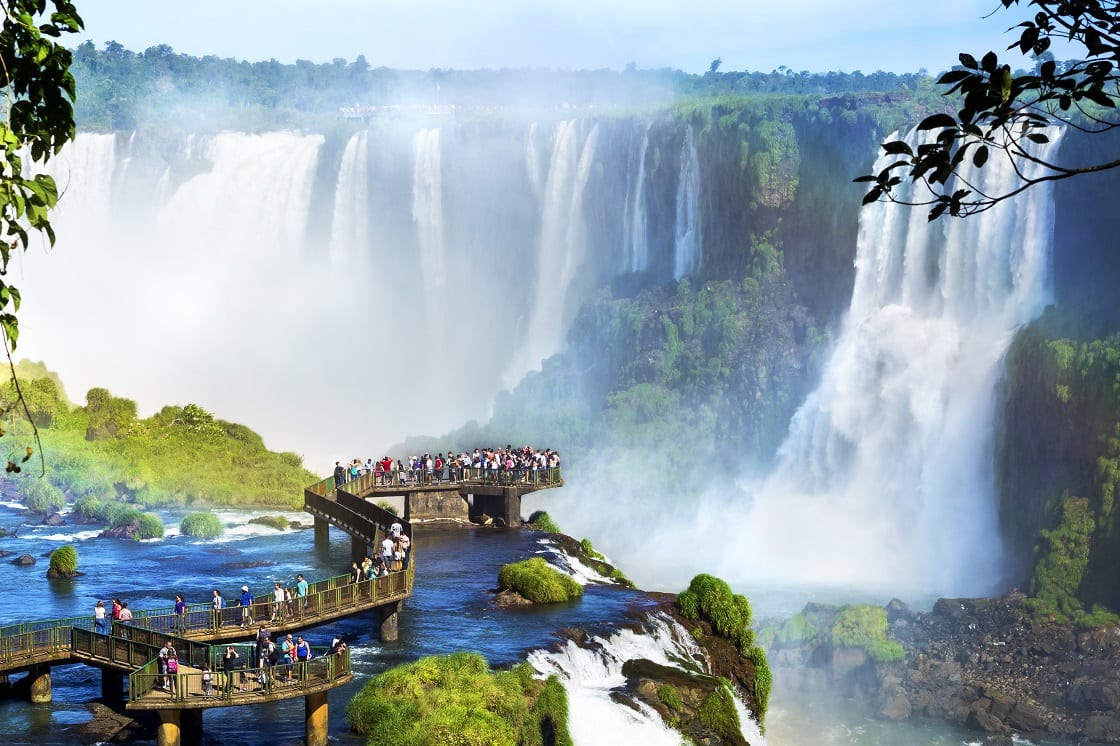
Slow travel in South America is a fulfilling and enriching way to experience the diverse cultures and landscapes of this vibrant continent. To truly immerse yourself in the local way of life, it is important to carefully plan your trip. In this section, we will discuss the key elements of planning a slow travel trip to South America. From choosing the right destinations to considering sustainable accommodation options, we will provide valuable tips for a memorable and meaningful journey.
1. Choose Your Destinations Wisely
When planning a slow travel trip to South America, it is essential to choose your destinations wisely. Consider the following steps to make informed decisions:
- Research and prioritize: Begin by researching the various countries and cities in South America. Take into account factors such as cultural attractions, natural landscapes, safety, and accessibility.
- Identify your interests: Determine what interests you the most - whether it's history, nature, adventure, or food. This will help you narrow down your choices and select destinations that align with your preferences.
- Consider travel time: Take into consideration the time it takes to travel between destinations. Opt for places that are relatively close to each other to minimize travel time and maximize your time spent exploring.
- Season and weather: Check the weather patterns and seasons in the destinations you are considering. Avoid visiting during the rainy season or extreme weather conditions that may hinder your experience.
By carefully choosing your destinations, you can ensure a fulfilling and memorable slow travel experience in South America.
2. Research Local Customs and Language
When planning a slow travel trip to South America, it is important to research and understand the local customs and language for a more immersive experience. Here are some steps to help you with this process:
- Learn Basic Phrases: Familiarize yourself with common greetings, polite expressions, and simple phrases in the local language. This will not only help you navigate daily interactions but also show respect to the locals.
- Study Cultural Etiquette: Research cultural customs, traditions, and etiquette specific to the destinations you plan to visit, including appropriate dress codes, dining etiquette, and social norms.
- Understand Local Sensitivities: Be aware of sensitive topics or behaviors that may be considered offensive or disrespectful in the local culture, such as religious practices, political views, or social taboos.
- Explore Local Traditions: Look into festivals, celebrations, or special events happening during your visit. Participating in these cultural activities can provide a deeper understanding of the local traditions and way of life.
- Connect with Locals: Seek opportunities to interact with locals, whether through homestays, guided tours, or community-led initiatives. Engaging with the local community will not only enhance your cultural knowledge but also create meaningful connections.
By taking the time to research and understand the local customs and language, you can ensure a more respectful and enriching slow travel experience in South America.
3. Consider Sustainable Accommodation Options
When planning a slow travel trip to South America, it is important to consider sustainable accommodation options. By choosing lodging that aligns with environmentally-friendly practices, you can minimize your impact on the local ecosystem and support businesses that prioritize sustainability. Here are some steps to consider:
- Look for eco-lodges or hotels that have been certified for their sustainable practices, such as the use of renewable energy sources and water conservation measures.
- Consider staying in locally-owned accommodations, as they often have a stronger connection to the community and support local economies.
- Research accommodations that promote cultural preservation and engage in initiatives that benefit the local community.
- Opt for accommodations that prioritize waste reduction and recycling programs.
When in South America, there are several sustainable accommodation options worth considering. For example, in Peru, the Inkaterra properties in Machu Picchu and the Sacred Valley are known for their commitment to sustainable tourism. In Ecuador, the Mashpi Lodge offers a unique eco-luxury experience within a biodiverse cloud forest. By choosing sustainable accommodation options, you can enhance your slow travel experience while minimizing your environmental footprint.
4. Plan for Longer Stays in Each Destination
When planning a slow travel trip to South America, it is important to plan for longer stays in each destination to fully immerse yourself in the local culture and experience the true essence of the place. Here are some steps to consider:
- Research and prioritize: Identify the destinations that align with your interests and goals for the trip.
- Understand the local customs and language: Take the time to learn about the local customs, traditions, and basic phrases in the local language to enhance your interactions and understanding.
- Opt for sustainable accommodation: Choose accommodations that support sustainable practices and contribute to the local community.
- Plan for longer stays: Allocate more time in each destination to allow for a deeper exploration and connection with the local community.
During my slow travel trip to South America, I spent a month in Cusco, Peru. By staying for a longer duration, I was able to participate in local festivals, learn traditional Peruvian cooking, and develop meaningful friendships with locals. It was an enriching experience that allowed me to truly immerse myself in the vibrant culture of the city.
What are Some Recommended Slow Travel Destinations in South America?
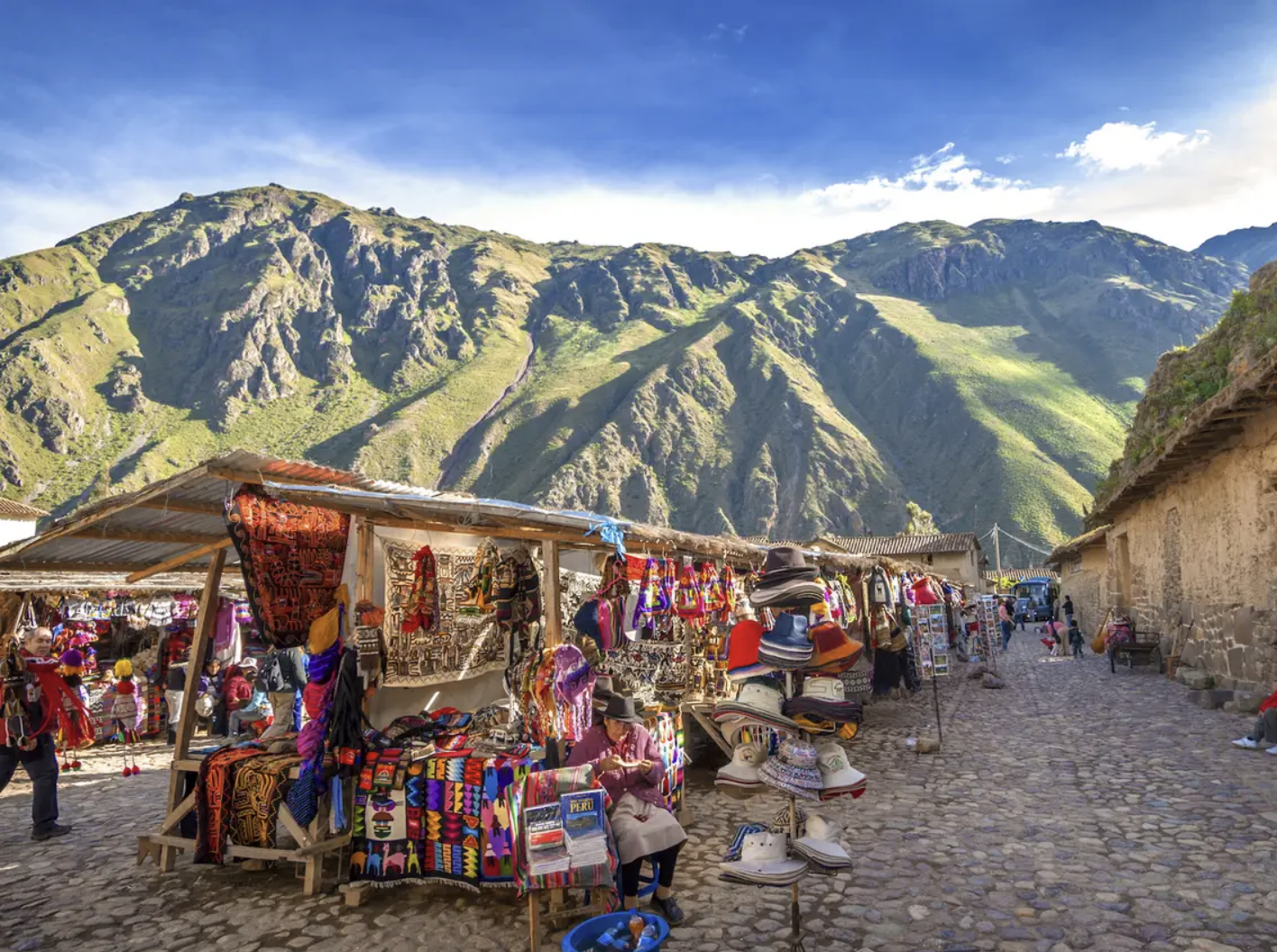
South America is a vast and diverse continent, offering endless opportunities for exploration and adventure. For those looking to truly immerse themselves in the culture and beauty of this region, slow travel is the way to go. In this section, we will highlight some of the top recommended destinations for slow travel in South America. From the ancient ruins of Cusco, Peru to the vibrant streets of Buenos Aires, Argentina, there is something for everyone to discover and savor in these destinations.
1. Cusco, Peru
Cusco, Peru is a fantastic destination for slow travel enthusiasts. To plan a memorable trip to Peru, consider the following steps:
- Explore the historic city center: Visit the Plaza de Armas, explore the narrow streets, and admire the colonial architecture.
- Experience local culture: Immerse yourself in the rich Inca heritage by visiting the Qorikancha temple and the San Pedro market.
- Embark on a trek to Machu Picchu: Take the classic Inca Trail or opt for alternative treks like the Salkantay or Lares routes.
- Sample Peruvian cuisine: Indulge in traditional dishes like ceviche, lomo saltado, and rocoto relleno at local restaurants and street food stalls.
Pro-tip: To make the most of your slow travel experience in Peru, take the time to interact with locals, learn a few basic phrases in Spanish, and embrace the relaxed pace of life in this enchanting city. Don't rush through the sights and activities—savor each moment and allow yourself to truly immerse in the vibrant culture and breathtaking landscapes of Peru.
2. Cartagena, Colombia
When visiting Cartagena, Colombia for a slow travel experience, follow these steps to fully immerse yourself in the vibrant culture and history of the city:
- Explore the Old Town: Take a leisurely stroll through the narrow cobblestone streets of the walled city, admiring the colorful colonial buildings and charming plazas.
- Visit the Castillo San Felipe de Barajas: Discover the impressive fortress and learn about its role in protecting the city from invasions.
- Indulge in the Local Cuisine: Savor traditional dishes like arepas, ceviche, and fried plantains at local restaurants or street food stalls.
- Take a Chiva Ride: Hop on a brightly decorated party bus and enjoy a festive ride around the city, accompanied by live music and dancing.
True story: During my visit to Cartagena, Colombia, I joined a local cooking class where I learned how to prepare traditional Colombian dishes. The experience allowed me to connect with the local culture, interact with friendly locals, and savor the delicious flavors of Colombian cuisine. It was a memorable and authentic experience that truly embodied the essence of slow travel.
3. Buenos Aires, Argentina
When visiting Buenos Aires, Argentina for a slow travel experience, follow these steps to make the most of your trip:
- Explore the neighborhoods: Buenos Aires is known for its diverse neighborhoods, each with its own unique character and charm. Visit Palermo for trendy cafes and boutiques, San Telmo for its historic architecture and tango culture, and Recoleta for its elegant parks and museums.
- Immerse in the local culture: Attend a tango show or take a tango lesson to experience the passion and rhythm of this iconic dance form. Visit local markets like Feria de Mataderos to discover traditional crafts, music, and food.
- Taste the local cuisine: Indulge in Argentina's famed beef at a traditional parilla (steakhouse) or try empanadas and mate tea at a local cafe. Don't miss the opportunity to savor a delicious steak in one of Buenos Aires' renowned steakhouses.
- Appreciate the arts: Buenos Aires is a hub of artistic expression. Visit the historic Teatro Colon for a world-class opera or ballet performance, explore the vibrant street art scene in the neighborhoods of Palermo and La Boca, and visit the MALBA museum for a collection of Latin American art.
Buenos Aires offers a rich blend of culture, history, and culinary delights, making it an ideal destination for slow travel enthusiasts looking to immerse themselves in the vibrant spirit of Argentina.
4. La Paz, Bolivia
La Paz, Bolivia is a vibrant and culturally rich city that offers the perfect setting for slow travel. Known as the highest administrative capital in the world, La Paz has a unique charm that attracts travelers seeking authentic experiences. Here's why Bolivia is a great destination for slow travel:
- Rich history: Bolivia is steeped in history, with well-preserved colonial architecture and indigenous traditions. Explore the Witches' Market, where you can find traditional remedies and charms, or visit historical sites like Plaza Murillo.
- Stunning natural landscapes: Nestled in the Andes Mountains, Bolivia offers breathtaking views and opportunities for outdoor activities. Take a cable car ride to El Alto for panoramic vistas, or hike to the Moon Valley to witness the unique rock formations.
- Cultural immersion: Experience the vibrant local culture by attending traditional festivals, such as the Alasitas Fair or the Gran Poder Festival. Engage with the friendly locals and try traditional Bolivian cuisine like salteñas or api.
- Sustainable tourism: Bolivia is committed to sustainable practices, with initiatives promoting responsible tourism and eco-friendly accommodations. Stay in locally-owned guesthouses or eco-lodges that support the community and minimize environmental impact.
In summary, Bolivia is a captivating destination for slow travel, offering a blend of history, natural beauty, cultural immersion, and sustainability. Discover the hidden gems of this enchanting city while taking the time to connect with its people and heritage.
La Paz, Bolivia was founded by Spanish conquistadors in 1548 and quickly became an important center of colonial power. Originally named Nuestra Señora de La Paz (Our Lady of Peace), the city played a significant role in the Spanish Empire's control over the region. Today, La Paz is a bustling metropolis that showcases a blend of indigenous and colonial influences. Its unique location at an altitude of over 11,900 feet (3,600 meters) above sea level makes it a must-visit destination for adventure seekers and cultural enthusiasts alike.
Frequently Asked Questions
What is slow travel in South America?
Slow travel in South America is a travel approach that focuses on taking the time to truly experience and immerse oneself in the local culture and environment. It involves slowing down the pace of travel, spending longer periods of time in each destination, and avoiding rushed itineraries.
Why should I consider slow travel in South America?
Slow travel in South America allows for a deeper and more meaningful travel experience. It allows for a better understanding of the local culture, cuisine, and way of life. It also helps to reduce the negative impacts of tourism on the environment and local communities.
What are some popular destinations for slow travel in South America?
Some popular destinations for slow travel in South America include the Andean region (Peru, Bolivia, and Ecuador), Patagonia (Argentina and Chile), and the Amazon rainforest (Brazil, Peru, and Colombia). These destinations offer a diverse range of experiences and opportunities for authentic cultural immersion.
How do I plan for a slow travel trip in South America?
Planning for a slow travel trip in South America involves selecting destinations that align with your interests and travel style, researching local transportation options, and allowing for longer stays in each location. It's also important to be flexible and open to unexpected experiences and detours.
Is slow travel in South America more expensive than traditional travel?
It depends on your travel style and preferences. Slow travel in South America may involve spending more on longer stays and local experiences, but it also reduces costs in other areas such as transportation and accommodations. It can be a more budget-friendly option for those willing to forgo luxury and prioritize authentic experiences.
What are some tips for practicing sustainable slow travel in South America?
Some tips for practicing sustainable slow travel in South America include supporting local businesses and communities, using eco-friendly transportation options, reducing waste and plastic usage, and being respectful and mindful of the local culture and environment. It's also important to educate oneself on responsible tourism practices and leave a positive impact on the destinations visited.


